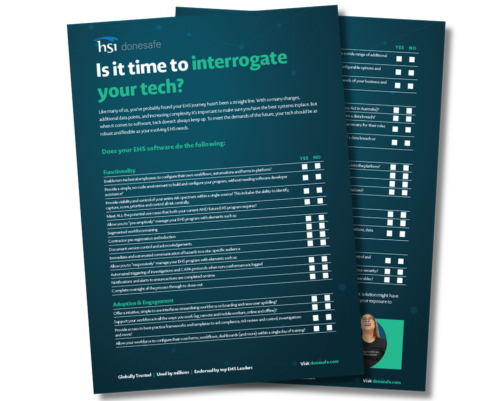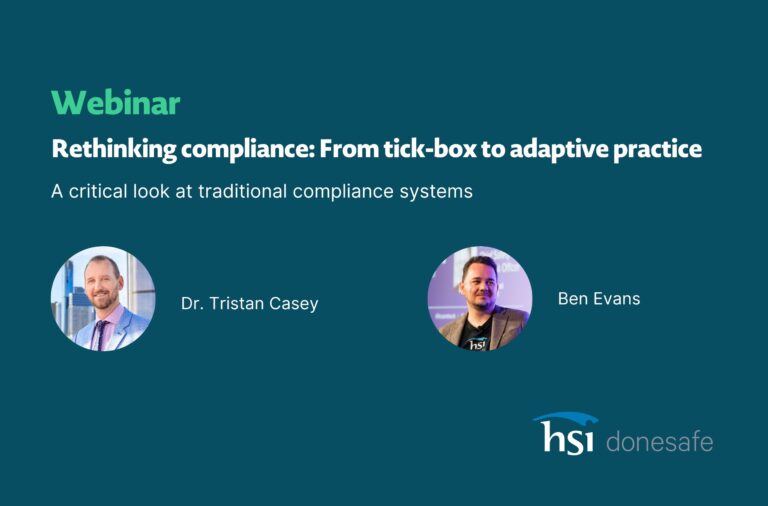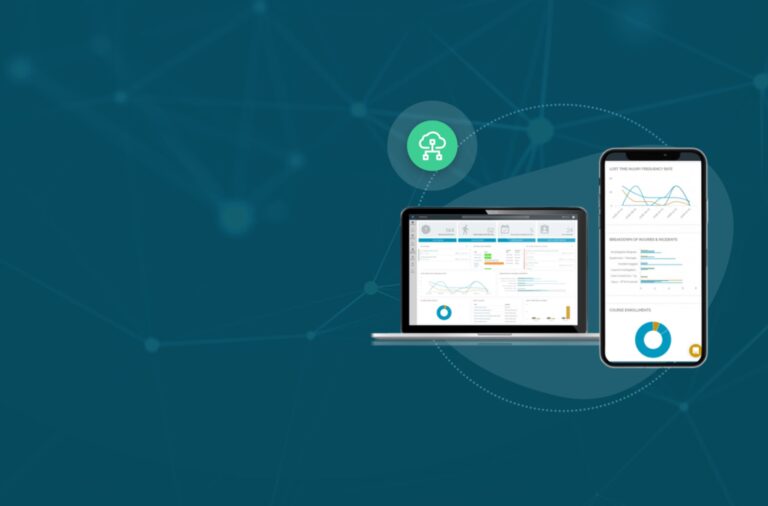
When should you review your EHS software and what should you look for?
No-one likes change. But as an Environmental, Health and Safety (EHS) professional, change comes with the role and you’re constantly keeping up with new regulations, new initiatives, new staff, and new ways of working.
However, one thing that may also need updating is the software that supports your EHS programs – the right software can make all the difference (and the wrong software can seriously hold you back from reaching EHS maturity).
So what’s holding you back from reviewing your EHS systems and software?
For many it’s a simple case of “if it ain’t broke, why fix it”. With so much going on with our day to day tasks, there just isn’t enough time (or energy) to focus on non mission critical activities. Or perhaps it’s a case of “it’s the way we’ve always done it” and the thought of more change doesn’t seem to justify the reward. Finally, it could be down to limited resources and not having the support to review, shortlist, select and implement a new system.
Sounds about right? It should, as it’s the feedback we get from so many EHS professionals.
The funny thing is, though, that these are all symptoms and should be a trigger to consider reviewing your systems. You see, if your systems were working effectively you wouldn’t feel like you didn’t have time to make improvements to your programs. With the right systems in place, you shouldn’t need deep tech expertise to implement change, and if it’s just a case of ‘it seems to be fine’ you may be experiencing status-quo bias.

Other, more explicit indicators that it’s time to review your software were highlighted in an article on the renowned tech review website, Capterra. In the article 4 Signs It’s Time to Move On and Check Out New Software, the following triggers were listed:
1. The growing pains are becoming too real
- Your employees are sharing software logins and can’t work simultaneously
- You can’t find your work easily
- Your software can’t do everything you need it to
- Your business requires a Frankenstein-esque mix of software
- Your employees have trouble working on projects because they don’t know which tool to track things in.
- The tools you use don’t integrate well, resulting in isolated information or lagging updates.
- To keep things working, you constantly have to patch your older software.
- You’re experiencing productivity or inefficiency problems
- Project timelines are getting delayed
- Your employees are doing manual business processes
- There is growing frustration with team members about the software
- Your employees would rather not use it
- Your employees complain about how difficult the software is to use
- Users start creating their own process to get around the software
- Users don’t engage with the system and stop using when they should
How to review your current EHS software.
The truth is, not all EHS solutions are created equal. Businesses often encounter significant challenges when their software falls short in critical areas.
Below we’ll explore common shortcomings in EHS solutions and offer guidance on what to look for in a robust, reliable system.
Ready to interrogate your tech and ensure your tools are up to the task? Read on.
Functionality
The functionality of your EHS software is paramount. It must cover all essential aspects of EHS management, from incident reporting and audits to document control and risk assessment. Gaps in functionality can lead to inefficiencies and increased risks. Imagine relying on a system that lacks a comprehensive audit management feature – this oversight could result in missed audit deadlines and unresolved non-compliance.
What to Look For:
- Comprehensive Features: Ensure the software covers all critical EHS areas.
- Customisability: Look for solutions that allow you to tailor functionalities to your specific needs.
- User Feedback: Consider user reviews and feedback to understand how well the software functions in real-world scenarios.
- Usability: Look for solutions that offer no-code, simple to use functionality that doesn’t require software developer assistance.
User Adoption and Engagement
Even the most feature-rich software can fail if users don’t adopt and engage with it. Poor user adoption can stem from a lack of training, a complex interface, or insufficient support. For instance, if employees find the software difficult to use, they might revert to manual processes, undermining the system’s effectiveness.
What to Look For:
- Intuitive Interface: User-friendly design that simplifies the user experience.
- Available anywhere: The system should be easily accessible from any device, offline and online.
- Training Programs: Comprehensive training resources and onboarding support.
- Engagement Metrics: Tools to track and encourage user engagement and adoption.
Deployment and Implementation
The deployment and implementation process of EHS software can significantly impact its effectiveness. A cumbersome or poorly managed implementation can disrupt operations and delay benefits. Imagine a scenario where the deployment takes months longer than expected, causing prolonged operational inefficiencies, or complex implementations that require constant support requests for simple changes.
What to Look For:
- Clear Implementation Plan: A detailed, step-by-step implementation guide.
- Experienced Team: Support from a team with a proven track record of successful deployments.
- Timeline and Budget Adherence: Ensure the provider commits to a realistic timeline and budget.
- Dedicated Account Management: A person or team who understand your business needs.
Data Security and Privacy
Data security and privacy are critical given the sensitive nature of EHS data. Weak security can lead to breaches, exposing confidential information and damaging your reputation. For example, a data breach in your incident management system could reveal sensitive employee health data.
What to Look For:
- Robust Encryption: Data should be encrypted both in transit and at rest.
- Regular Security Audits: Frequent security assessments to identify and mitigate vulnerabilities.
- Compliance with Standards: Ensure the software complies with relevant security and privacy regulations.
- Data Breach Alerts: Immediately inform you in the event of a data breach.
Compliance
Maintaining compliance with regulatory requirements is expected in EHS management. Your software must help you stay up-to-date with the latest regulations and standards. Outdated or non-compliant software can lead to significant fines and legal issues. For instance, failing to update safety protocols in line with new regulations can lead to non-compliance.
What to Look For:
- Automated Updates: The software should automatically update to reflect regulatory changes.
- Compliance Management Tools: Features that help track and manage compliance requirements.
- Regulatory Alerts: Notifications about upcoming changes in relevant regulations.
Ongoing Support and Training
Continual support and training are vital to maximise the value of your EHS software. Inadequate support can leave your team struggling with issues, reducing the software’s effectiveness. Imagine facing a critical bug that halts compliance reporting, but the support team is slow to respond, resulting in missed deadlines and potential fines.
What to Look For:
- Responsive Support: Ensure quick response times and availability 24/7.
- Multiple Support Channels: Options like chat, phone, email, and a robust knowledge base.
- Continuous Training: Regular training updates and access to new learning resources.
Integrations and Authentication
Your EHS software should seamlessly integrate with other systems such as HR, ERP, and CRM. Poor integration can lead to data silos and inefficiencies. For example, if your EHS software doesn’t sync with your HR system, managing training records and compliance can become cumbersome and out-of-date.
What to Look For:
- Robust API Capabilities: Comprehensive APIs for integration with other third party systems.
- Pre-Built Integrations: Ready-made integrations for common systems, particularly regulators and insurance providers
- Secure Authentication: Strong authentication methods like SSO (Single Sign-On) and MFA (Multi-Factor Authentication) for enhanced security.
Evaluating your EHS SaaS solution critically is essential for ensuring it meets your needs and supports your compliance efforts. By focusing on the areas discussed – functionality, user adoption, deployment, data security, compliance, ongoing support, and integrations – you can identify potential shortcomings and take steps to address them.
Your EHS software should empower your business, not hold it back.
If you’re feeling restricted by your EHS software, take the time to review your current solution using the points above. To help you get started, download our quick Interrogate Your Tech checklist – in just a few minutes you’ll know how your software stacks up.
__________________________________________
Other Resources you might find helpful:
- Identify your biggest EHS program gaps, in under 10 minutes with our EHS Readiness Diagnostic
- Discover how to transform your workplace safety with our HSI Donesafe Platform Information Pack
Keen to explore Donesafe further? Reach out today.
Share:



